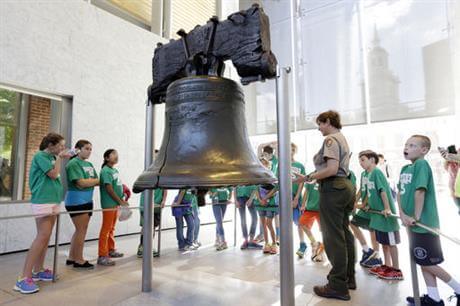
By KATHY MATHESON
When the Democrats come to the City of Brotherly Love to nominate Hillary Clinton for president and the talk turns to income inequality and the 1 percent, Exhibit A will be right outside their windows: Philadelphia itself.
The nation’s fifth-largest city is rebounding, filling some Philadelphians with an unfamiliar sense of civic pride. And yet it struggles with the gap between rich and poor that Sen. Bernie Sanders decried during his campaign against Clinton, with 26 percent of residents living in poverty, the highest rate among the 10 biggest cities in the U.S.
The July 25-28 convention creates an opportunity to acknowledge the city’s successes in urban revitalization, but also “to look closely at the real Philadelphia, which is also the real America,” said Randall Miller, a history professor at Saint Joseph’s University.
Philly has ridden a wave of good publicity lately. Pope Francis visited last fall, and Lonely Planet named the city its top travel destination in 2016. The opening of new civic spaces, bike paths and beer gardens has generated major buzz.
And yet a report released this year by Pew Charitable Trusts found that for every residential area that gentrified since 2000, there were 10 others where the median income dropped. Overall, annual median income in Philadelphia is about $39,000, compared with more than $53,000 nationally.
Many of the gentrified tracts ring Center City, the downtown area filled with nightspots, businesses and cultural attractions where delegates will probably spend a large amount of time. Numerous construction cranes dot the skyline, building high-end condos, offices, hotels and a second skyscraper for Comcast Corp.
“There have been in recent years a lot of positive signs in the city,” said Larry Eichel, who directs Pew’s Philadelphia Research Initiative. “But the high poverty rate and all that comes with it has not gone away.”
New Mayor Jim Kenney hopes to change that, starting with better schooling. Last month, City Council passed a soda tax, with the revenue going to expand prekindergarten and renovate badly run-down libraries and recreation centers.
“This is the beginning of a process of changing the narrative of poverty in our city,” he said.
The last time Philadelphia hosted a Democratic convention was 1948, a couple of years before hitting its peak population of nearly 2.1 million. The ensuing decades saw manufacturing jobs decline and middle-class families flee to the suburbs. By the time the Republicans came here in 2000 to nominate George W. Bush, the population had dropped to 1.52 million.
In 2006, the count hit 1.49 million — its lowest point in a century — before starting its slow rebound. The restaurant industry started hopping and a tech start-up community began taking shape. The Phillies even won the World Series in 2008, breaking a 25-year drought in major sports championships.
Today, Philadelphia has 1.57 million residents, and overall is younger and more diverse, according to Pew. That’s due in part to a large influx of millennials who often come for the city’s well-regarded universities and stay after graduating. Many find it an affordable, walkable place with a rich arts scene.
“You can go to plays, you can see music, you can eat really good food and not break the bank,” said Emma Fried-Cassorla, creator of the Philly Love Notes blog .
Still, many young adults leave after starting families because the school system is in such poor condition. The district has a graduation rate of just 65 percent, contributing to an unskilled workforce that business leaders say makes it hard to attract jobs.
There’s another group of millennials that is not faring so well: Young black men account for the majority of homicide victims, most by gunshot. Gun violence has wreaked havoc in swaths of the city, and the homicide rate has begun ticking up after historic lows in 2013 and 2014.
Norman Jefferson, who lives in a North Philadelphia neighborhood where the annual income averages $14,185 per year, recently passed a hot afternoon on his porch with his sister Shirley. They said Democratic delegates need to know how difficult it is to live on low wages.
“It costs more to ride the bus, to eat, to do everything,” said Shirley Jefferson, a retired school district employee. “But how are you going to do that without the salary going up?”
Philadelphia has hosted several “Fight For $15” protests where fast-food workers rallied for a $15 minimum wage. Democrats appear to be listening, incorporating their support into the party platform.
Convention CEO Leah Daughtry said she knows more must be done to ensure urban revitalization benefits all neighborhoods equally. She encouraged residents in the heavily Democratic city to participate in the event’s public sessions and “be part of the conversation about the issues they feel affect their lives.”
“I hope that local folks in Philadelphia will not miss the moment and will be part of history during the convention,” Daughtry said.
___
Follow Kathy Matheson at www.twitter.com/kmatheson
Discuss this story on Twitter or Facebook



